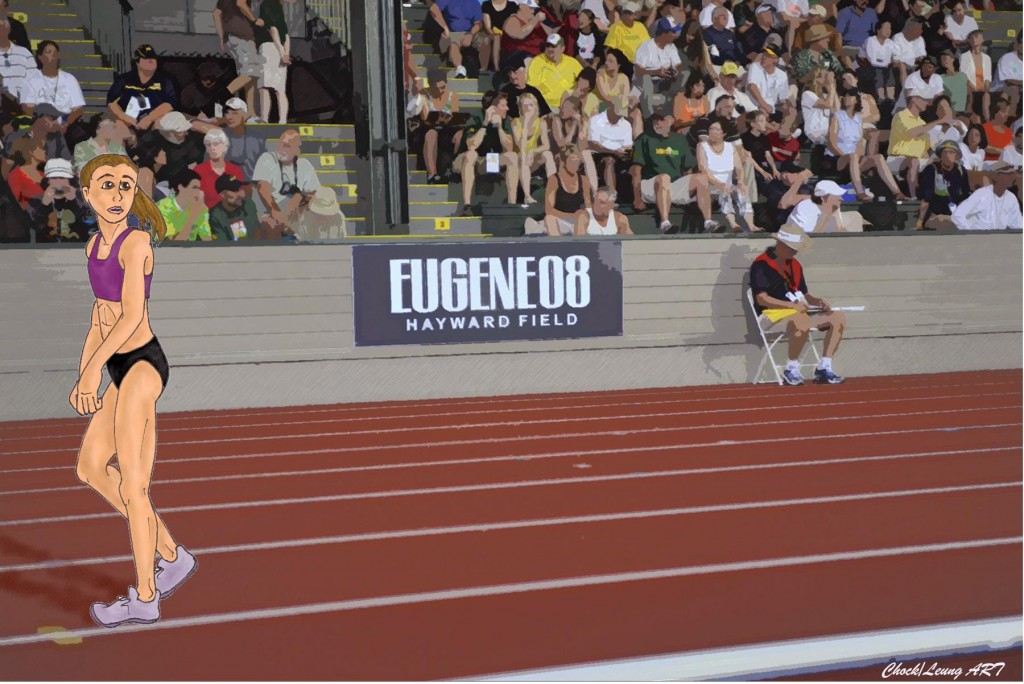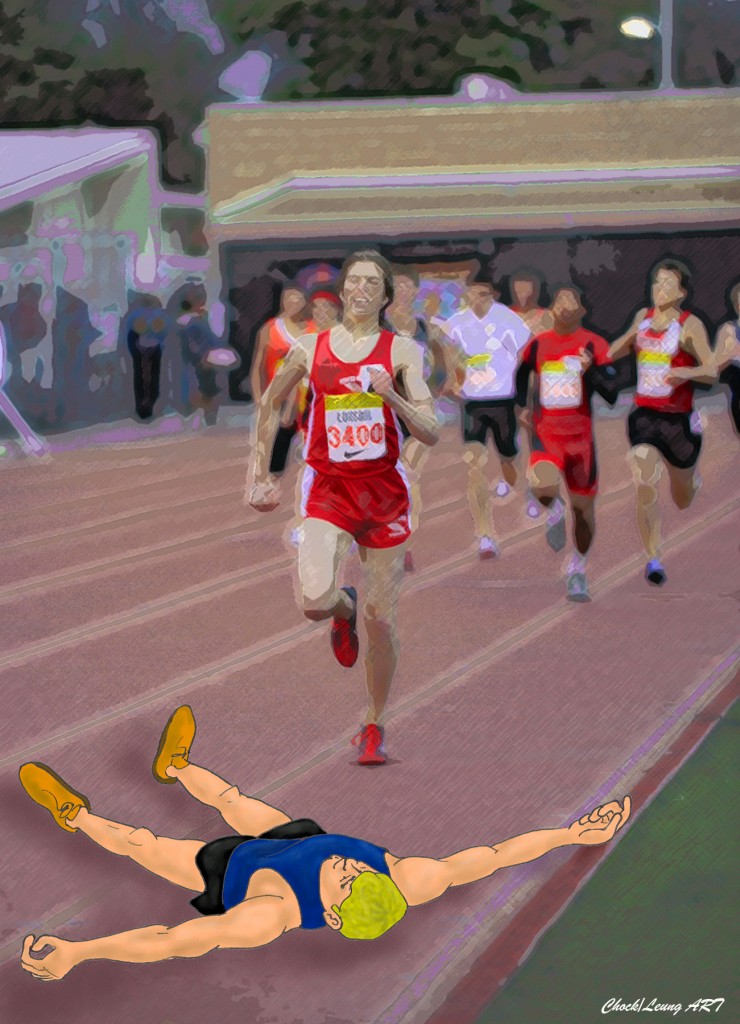In training, when you’re running hard intervals the emphasis is naturally on the hard sessions. You want to hit the splits and push yourself all the way through to the end. True, these hard sessions are what are going to tear down the muscles the most so that they can repair themselves and come back stronger…get you fitter and in the end faster.
But what does your recovery look like between these intervals? Do you cross the line and immediately come to a stand-still, a statue frozen in place relishing every second before you have to start the next one? Do you pace around a bit to collect yourself? Do you keep running, or jogging?
While the focus should still be heavily placed on the hard parts of your interval sessions taking a look at your recovery time can influence the gains you reap from the workout overall. Furthermore, shifting and adjusting the ‘rest’ phases of your workout can change both the kind of benefits you’ll be able to get and actually to the degree of which you are able to boost your fitness.
Let’s talk rest:
* A general rule of thumb is that the FASTER you’re trying to hit those intervals the MORE rest you should allow yourself. Fast-twitch muscle fibers can only fire for a short period of time, but they fire all-out and thus need more recovery before being fired again than your endurance-based, slow-twitch muscle fibers. If your aim for the day is to improve your base speed, say you’re doing 200 repeats, give yourself enough recovery so that you can really hit those 200’s and make them fast, that was the aim after all, right? Take a really slow 200 jog between each hard 200, don’t rush the recovery here.
* Active rest vs. standing. Here is where people may have slightly different opinions, but mine is that it’s better to keep moving, even if it’s only slow jogging, between each interval. Stopping dead and standing before jumping into another interval of hard running seems akin to pulling the emergency break and then peeling out; that next hard session is a shock to those ‘cold’ muscles. I’m of the school of thought that active rest, actually jogging recovery, is better for you.
* Define your workout. What is your goal for the workout? If it’s speed then refer above for how to attack your recovery. The LESS recovery you give yourself between intervals the MORE heavily your workout is going to stress, and hopefully improve, your cardiovasular system and endurance. Your endurance system actually needs less time to recover, (Trust me, even though you may not want to go into the next hard one, your body may be…hehe.) and the more you whittle your recovery down the closer you’re mimicking an actual race. We don’t get any rest there, do we? An example here would be that for 800 repeats, say 6-10 rep’s, I usually would suggest a 400 jog. A 400 recovery lap would also be suggested if you’re doing 4-6 x 1600 meters.
* Adjust your active recovery. How fast or slow are you taking that recovery? Distance runners can be tempted to actually run our recovery even a hair too fast thinking it makes them tougher. That can be true to a degree, but not so much so that you’re never allowing your body to recover between intervals and sacrificing those hard rep’s. Honestly, in the grand scheme of things ratchet it back and don’t feel ‘guilty’ about truly jogging slow, a red flag to go slower on your recovery is if your hard interval times start to drop and fall off pace.
* Playing around with the recovery time. As explained above, cutting down the time of your rest turns it more into an endurance workout and entering the realm of distance runners. The more experienced runners have been known to take incredibly short rests, even run the rest rather quickly, and still hammer the workout. Remember though, that you should build up to that level and make sure you can handle it. An obvious way to gauge that is if you’re still hitting the splits your want; if you are, then go ahead and test yourself to see if you can handle less rest. As you are able to progress doing that you’ll be making the workout harder and should be seeing the the results with more gains in fitness. There’s actually a really great article on Running Times with more on this topic HERE.
Are you sick of me talking about all this rest? Well good, it’s time for your next interval…GO! 😉
1) What does your rest between hard intervals look like? Active recovery jog, stand-still, pace around, etc.
2) How do you adjust or ‘prescribe’ your recovery for a given workout?
3) If you coach, how do you adjust the rest for your athletes or what do your recommend?
4) Have you even thought that much about your rest between intervals? If not, you should…hehe.



I’m definitely for active recovery or at least some movement in rest times – I find my muscles don’t like doing nothing!
i’m the same! it’s like the second i stop moving they think, “okay, workout done, we will totally fail her now.” 😉
I coach (and I use this term loosely, because it’s basically parents and volunteers) kids track and we definitely make the kids move for recoveries. I honestly never thought about recoveries so much until I started volunteering and coaching, though.
When you have a lot of kids it’s hard to track recovery time and obviously they’re not all wearing watches and even if they are, they don’t know how to track when 60 or 90 seconds is up, etc, so we usually have them jog or walk the recovery. Plus, like you said, you don’t get a break during a race, and I think maybe jogging it out helps their endurance at the same time (which will be pretty awesome come cross country season). And when your really young athletes are different paces and finish at different times, if you start too quickly, you cheat kids out of recovery time or you give them too much.
Personally, when I run, I try to jog or walk the recoveries too. It’s easier to start running fast again vs. totally stopping. I think it helps me as a distance runner.
hey, u are far more schooled than lots of the coaches out there for the younger kiddies! 🙂 at that age it’s mostly about keeping it fun and getting them to do the workouts. that said, i know it’s sometimes a cluster-fudge trying to manage workouts, who’s supposed to go, who’s supposed to rest…get u running around in circles urself! 😉 great job out there!
I believe in moving rest too, and I vary it according to my workout (and even within my workout) – when the speed is high, I take a longer recovery, or sometimes I do increasing intervals where the rest of just a slower high intensity speed (if that makes sense at all?). So I’ll do a zone 4 interval then a threshold speed minute and a zone 3 semi-recovery.
sounds like we are on the same page…hehe. 🙂
ha! I just stand there, always, unless the “RC” (running coach) specifically writes to do something (jog, etc). I should probably stop just standing there, but my slow jog is so slow it would take me much longer than the rest period to jog a 200 or whatever distance it is.
I agree on the moving rest in theory, just can’t seem to do it in practice.
haha…i PROMISE just try to keep moving and you’ll prolly feel a bit better, even if it’s a slow jog. 😉
Pingback: The Complimented Runner: Why numbers will always trump words |